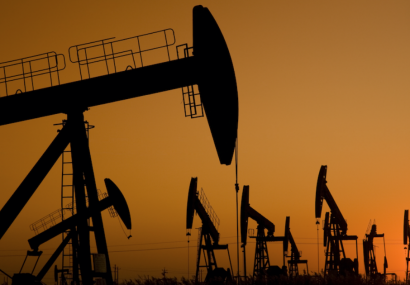
In a previous issue we reviewed a United States (U.S.) Department of Defense (DoD) report regarding the vulnerability of DoD infrastructure to climate-related events, including sea-level rise and wildfires. A recent report prepared by the U.S. Army War College, went one step further and looked specifically at the challenges to the U.S. Army (Army).
Background
The report, “Implications of Climate Change for the U.S. Army” (Report), was published summer 2019, but gained more recognition towards the end of the year when some news publications reviewed the Report and published articles about it with headlines warning about a potential Army collapse within 20 years.
The Report includes two parts with the first discussing the challenges posed by climate change and the second including the Report’s recommendations.
Under the summary section of the Report, it states that:
“In light of these findings, the military must consider changes in doctrine, organization, equipping, and training to anticipate changing environmental requirements. Greater inter-governmental and inter-organizational co- operation, mandated through formal framework agreements, will allow the DoD to anticipate those areas where future conflict is more likely to occur and to implement a campaign-plan-like approach to proactively prepare for likely conflict and mitigate the impacts of mass migration.”
The Report goes on to state in summary that:
“Finally, the DoD must begin now to promulgate a culture of environmental stewardship across the force. Lagging behind public and political demands for energy efficiency and minimal environmental footprint will significantly hamstring the Department’s efforts to face national security challenges.”
Part 1: The Challenge of Climate Change
In this first part, the Report highlights three challenges: 1) Climate Change and the Physical Environment, 2) Climate Change and the Social, Economic, and Political Environment, and 3) the Army and DoD – Organizational Confusion and Lack of Accountability for Climate Change.
Climate Change and the Physical Environment
In this section, the Report notes that climate change “affects the conditions in which people live, and the environment in which military organizations operate.” According to the Report, many factors are putting more people in harm’s way and thereby creating multi-dimensional stress on conventional military forces. Human migration and refugee relocation due to climate change also “create an environment ripe for conflict and large-scale humanitarian crises.” The Report goes on to detail a number of potential climate change impacts including sea-level rise, the opening of the Arctic, the increased range of insect-borne diseases, decreased fresh water availability, decreased food security, and stress to the power grid.
Climate Change and the Social, Economic, and Political Environment
The Report notes that although climate change’s potential impacts are likely familiar, the “social, political, and economic effects of human concerns about climate change” are not. The Report opines that the more the human population believes in climate change, its cause (human-induced), and its threat, this will lead to consequences that the Army will be unable to ignore. The Report proposes a framework to understand this challenge. The framework is composed of social, market, regulatory, and technological responses to climate change.
The Army and DoD—Organizational Confusion and Lack of Accountability for Climate Change
The Report is critical of the military’s inattention to climate change. It opines that “we currently have no systemic view to assess and manage [climate change] risk.” It compares China’s actions to that of the U.S. and notes that the potential exists “to create very significant asymmetries in resilience between the U.S. and China to climate-induced effects and any other type of attack or disaster.” The Report notes DoD’s responsibility to create another climate change vulnerability assessment in the coming years, but questions whether the Army will do much beyond providing the answers required for DoD’s report.
The Report also provides examples showing the Army’s “environmentally oblivious culture,” including jet fuel dumped overboard when turbine engines are shut off, the soil damage caused by armored vehicles and the “thousands of pages of PowerPoint presentations” that are printed every day and discarded after a briefing. The Report summarizes its position succinctly: “the Army is an environmental disaster.”
Report Recommendations
The second part of the Report includes recommendations in four “areas”: 1) the Army Operating Environment, 2) the Army Institution, 3) the Joint Force and DoD, and 4) the National Context.
The Army Operating Environment
In this section, the Report includes a number of recommendations to address the Army’s hydration challenges in arid environments. It also recommends increased planning in order to prepare for an expanded role in Artic operations associated with global climate adaptation.
The Army Institution
The Report contends that the Army lacks a culture of environmental stewardship and recommends that its “norms and values must change.” The Report notes that although the current administration may have backed out of the Paris Agreement, “the majority of the American people believe that climate change is a threat.” The Report sees an opportunity for the Army to “lead the nation in preparedness and environmental awareness” or, alternatively, it can continue “hurtling through the night in the belief that it is as unsinkable as the Titanic.”
The Joint Force and the Department of Defense
In this section, the Report details the type of inter-agency collaboration it believes is necessary to adequately address a lack of coordination and to consolidate climate-change related intelligence.
The National Context
In this section, the Report looks at potential power grid vulnerabilities and recommends “reverse infrastructure degradation around military installations” and the development of “cutting edge strategies for decentralized power generation and storage.”
Conclusion and Implications
Although the Report is very technical, it also serves as an effective call to action. It will be interesting to see if the Army’s leaders implement any of the Report’s recommendations. In the end, the Report finds that the U.S. Army is “precariously unprepared” for the impacts of climate change. The Report is available online at: https://climateandsecurity.files.wordpress.com/2019/07/implications-of-climate-change-for-us-army_army-war-college_2019.pdf
(Kathryn Case)




